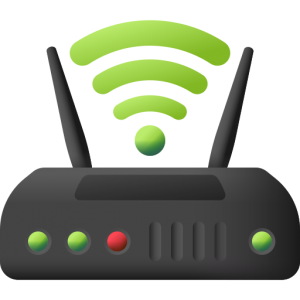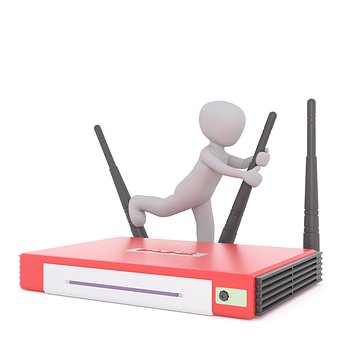Netgear WiFi Extender Setup
In an age where staying connected is paramount, a reliable and robust WiFi network is the backbone of our digital lives. However, even the most powerful routers can struggle to cover every nook and cranny of our homes or offices. This is where WiFi extenders, like those offered by Netgear, come to the rescue. They promise to amplify your wireless signal, erasing dead zones and ensuring uninterrupted connectivity. But, as with any technology, Netgear range extender setup can present its fair share of challenges. From connectivity issues to configuration complexities, the road to achieving that seamless network extension may seem daunting. In this comprehensive guide, we’ll walk you through the ins and outs of Netgear extender setup, addressing common issues and providing step-by-step solutions to ensure that your WiFi network is not only extended but also optimized for peak performance.
How To Setup Netgear Wifi Extender:
Netgear range extender setup is a straightforward process that can significantly improve your wireless network’s coverage and performance. Wi-Fi extenders, also known as range extenders or boosters, assist in eliminating dead zones and improving Wi-Fi performance in locations with poor signals. In this section, we will guide you on how to setup Netgear wifi extender:
- Choose the Right Location: To setup Netgear range extender, place the extender halfway between your router and the area where you need improved Wi-Fi coverage. The extender should be close to your existing Wi-Fi network.
- Plug in the Extender: To setup Netgear range extender, plug the Wi-Fi extender into an electrical outlet. Make sure it’s in close proximity to your router for the initial setup.
- Connect to the Extender: On your computer or mobile device, go to your list of available Wi-Fi networks. Look for the network named “NETGEAR_EXT” or something similar. This is the default SSID (network name) of your extender. Connect to it.
- Access the Extender’s Web Interface: For Netgear range extender setup, open a web browser (e.g., Chrome, Firefox, Safari) and type “http://mywifiext.net” or “http://192.168.1.250” into the address bar. Press Enter. You’ll be prompted to log in. Use the default username and password, which are often “admin” for both. If you’ve changed these credentials before, use the ones you set.
- Setup Netgear range extender: Follow the on-screen instructions to set up the extender. You’ll typically see an option like “New Extender Setup” or “Quick Setup.”

- Select the Network to Extend: To setup Netgear wifi range extender, choose your existing Wi-Fi network from the list of available networks. Enter the Wi-Fi password for your existing network when prompted.
- Configure Extender Settings: You may have the option to change the SSID and password for the extended network. It’s a good practice to give it a different name than your main network, so you can easily distinguish between them.
- Connect to the Extended Network: Once the Netgear extender setup is complete, your extender will reboot. Afterward, reconnect your computer or mobile device to the extended network. The SSID for the extended network should be the one you set up in the previous step.
- Test Your Extended Network: To setup Netgear wifi range extender, verify that your devices can now connect to the extended network and that you have improved Wi-Fi coverage in the previously weak areas.
- Finalize Settings (Optional): You can log back into the extender’s web interface to further customize settings, such as channel selection, security settings, and updating firmware.
You’ve successfully setup Netgear wifi range extender, enhancing your home network’s coverage and performance. Keep in mind that the specific steps and features may vary depending on your Netgear extender model.
Common Netgear WIFI Extender Setup Issues:
Netgear wifi range extender setup can be a daunting task for some users, often accompanied by a host of issues that can frustrate even the most tech-savvy individuals. These problems can range from connectivity issues to configuration challenges, leaving users grappling with the complexities of extending their wireless network, here are some Netgear extender setup issues:
- Connectivity Problems: Users frequently encounter difficulties establishing a stable connection between the Netgear WiFi extender and their router, often due to compatibility issues or interference from nearby electronic devices.
- Complex Configuration Interface: The Netgear extender setup interface provided by Netgear can be overwhelming for users unfamiliar with networking terminology, leading to confusion and errors during the Netgear wifi range extender setup process.

- Firmware Updates and Compatibility Issues: Users may struggle with updating the extender’s firmware and resolving compatibility issues between devices, causing frustration and delaying the Netgear extender setup process.
- Placement Challenges: Finding the ideal location for the extender in the home or office can be a significant challenge, as it requires avoiding interference and signal degradation while effectively boosting the WiFi signal.
- Password and Security Concerns: Users may encounter issues related to setting up strong passwords and configuring security settings on their Netgear WiFi extenders, leading to concerns about the safety of their network.
- Signal Strength and Range Problems: Achieving the desired signal strength and range can be problematic during setup, especially in larger or multi-story buildings, leaving users with dead zones or weak signal areas.
- Technical Expertise Requirement: The Netgear extender setup process often demands a certain level of technical knowledge, which can be a barrier for users with limited experience in networking and technology, making the installation process more challenging.
Netgear WiFi extender setup issues can be numerous and challenging to overcome. Users often face problems related to connectivity, configuration, interface complexity, firmware updates, and placement.
How To Fix Netgear Wifi Extender Setup Issues:
Netgear wifi range extender setup can significantly enhance your wireless network’s coverage and performance. However, this process isn’t always a straightforward endeavor, and users often encounter a range of issues along the way. Whether it’s connectivity problems, configuration challenges, or concerns about security and signal strength, troubleshooting these issues is essential for a successful Netgear extender setup. In this guide, we’ll explore how to address common problems that arise during Netgear WiFi extender setup, ensuring that you can enjoy seamless WiFi coverage throughout your home or office.
- Check Connectivity Issues: To setup Netgear wifi range extender, ensure that your extender is within the range of your router’s WiFi signal. If the extender is too far away, it may struggle to establish a connection. Verify that the extender is compatible with your router. Incompatible devices can lead to connectivity problems.
- Simplify Configuration: Follow the Netgear extender setup instructions provided in the extender’s manual carefully. This typically involves connecting to the extender’s default WiFi network and accessing its setup interface via a web browser. Ensure that you enter correct login credentials and settings during Netgear wifi range extender setup process.

- Address Firmware and Compatibility Issues: Check for firmware updates for both your router and extender. Outdated firmware can cause compatibility problems. To setup Netgear wifi range extender, ensure that both devices are using the latest firmware versions. Ensure that your router and extender are on the same WiFi band (2.4GHz or 5GHz) for compatibility. Some extenders support both bands, so choose the one that suits your needs.
- Optimize Placement: For Netgear range extender setup, experiment with the placement of your extender. Try to find a location where it can receive a strong signal from your router while also effectively extending the WiFi range to the desired areas. Avoid installing the extension in areas where other electrical devices, such as microwaves or cordless phones, may cause interference.
- Password and Security Settings: During setup, ensure that you set a strong password for your Netgear WiFi extender to secure your network. Check that your security settings, such as WPA2/WPA3 encryption, are configured correctly to protect your network from unauthorized access.
- Signal Strength and Range Adjustment: Use the Netgear extender’s web interface to adjust the signal strength settings if necessary. Increasing or decreasing the signal strength can help optimize coverage. If you have a large home or office, consider adding multiple extenders to cover all areas effectively.
Navigating the complexities of Netgear WiFi extender setup may seem daunting, but with the right approach, you can overcome common challenges and enjoy improved network coverage. By addressing issues related to connectivity, configuration, firmware updates, placement, and security, you can ensure that your Netgear extender functions optimally.
Conclusion:
Navigating the Netgear WiFi range extender setup doesn’t have to be a daunting task. While it’s true that challenges may arise along the way, understanding the common issues and how to address them can make the process much smoother.
We’ve explored the intricacies of Netgear extender setup, delving into topics such as connectivity, configuration, placement, security, and troubleshooting. Armed with this knowledge, you’re better equipped to tackle any obstacles that may come your way.
Remember, the goal is not just to extend your WiFi network, but to do so effectively and efficiently. With the right approach, you can bid farewell to WiFi dead zones and enjoy seamless connectivity in every corner of your space. To know more about Netgear Router and resolve its related issues, you can navigate to Netgear Support Page.
